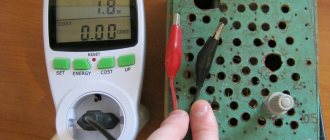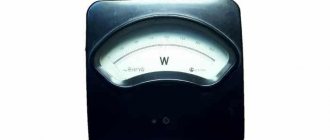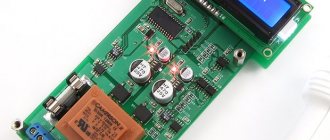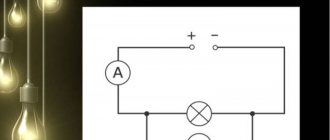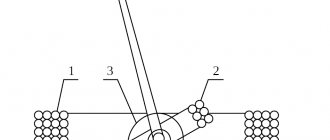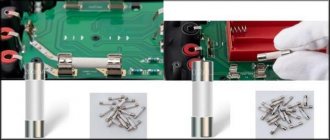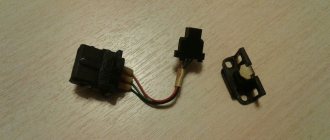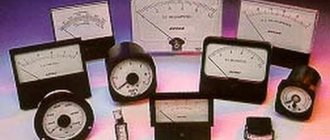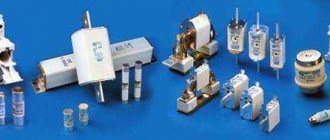One of the parameters that characterizes the state of the electrical network is its power.
It reflects the amount of work performed by electric current per unit of time. The power of devices included in the electrical circuit must be within the power of the network. Otherwise, unpleasant surprises are possible - from equipment failure to short circuits and fires. The power of electric current is measured with a special device - a wattmeter. And if in a DC circuit it is calculated by simply multiplying the current by voltage (a voltmeter and an ammeter are sufficient), then in an AC network you cannot do without measuring equipment. They also control the operating mode of electrical equipment and take into account energy consumption.
What it is
Today, saving energy is an extremely pressing issue. A large number of devices are produced that use the latest technologies, which make it possible to save electrical energy without losing quality. In addition, progress has also affected measuring devices.
Household wattmeter
A household wattmeter is a device designed to measure the power that is consumed by an electricity receiver at home and does not require a special switching circuit. Unlike electric meters, which measure the power used in apartments (houses), a wattmeter is capable of measuring power at any point in the home.
Important! The device in question functions as accurately as an electric meter. The difference will be a finer breakdown of information for a specific consumer.
The main areas of application of wattmeters are industrial sectors in the electrical power industry, mechanical engineering, and repair of electrical devices. In addition, such devices are often used in domestic settings. They are purchased by electronics specialists, computer specialists, and radio amateurs to calculate energy savings.
Wattmeters are used to:
- Calculate the power of devices.
- Conduct tests of electrical circuits and certain parts of them.
- Test electrical installations as indicators.
- Check the operation of electrical equipment.
- Keep records of energy consumption.
Household wattmeters in an outlet do not require special connection diagrams. When the electric meter shows the total power in the home, such devices reflect the operation of all outlets separately. Their device provides a plug for connecting to an outlet and a socket to turn on the load.
Device design
Setting up an electronic socket with a timer
Sockets with an electronic timer are available for weekly and daily use. Unlike mechanical connectors, they are not as easy to configure. Such devices include a system for setting not only the current time, but also the day of the week. Also, electronic sockets are preset for one hundred and forty operating cycles.
Configuring such electrical network connectors from timers is carried out in the following way:
- turn on the device to the network to recharge the battery;
- indicate the actual day of the week and time on the switched socket;
- set the on and off period using the programming system;
- after setting, press the “Time” key so that the set current time is indicated on the display;
- connect the outlet to the network and connect the device to it.
During installation, care must be taken to ensure that these programs do not overlap each other.
How to set up a socket with a clear timer
This socket has ten programs for turning the device on and off, mode selection, a display with seconds and sixteen possible combinations of days of the week. The device also has a function for changing the time to summer and the ability to select time modes - twelve hour or twenty-four hour. Before setting up such an outlet with an electronic timer, the battery is charged for twelve hours. To do this, you need to connect the connector to the network.
After this, previously installed programs are activated by pressing the button marked “Master clear”. The button is activated using a sharp object - a pin, pencil or the writing part of a pen. Only then can programming of the electronic product be carried out.
Programming consists of the following stages:
- Press and hold the “Clock” button until the current time and day of the week are displayed simultaneously. The minutes are set with the “Min” key, the hours with the “Hour” button, and the days with the “Week” button.
- Press the “Timer” button once and set the on time. At this time, “On1” will appear on the screen. Next, you can set a timer to turn off the outlet. The date is set using the same keys – “Min”, “Week” and “Hour”. After setting, press the “Timer” indicator again.
- Using these actions, you can configure parallel tasks. You can view the entire list of actions using the “Timer” button, which should be held down for several seconds.
- After completing the settings, press the “Clock” key to put the timer into working order. In “Manual on” mode, the socket operates normally without programming. “Manual off” is a function to turn off the device. You can set the timer only in “Auto” mode.
Electronic sockets allow you to set not only the current time, but also the days of the week
Also, the socket with the clear timer has a floating switch off. The function is launched with the “RANDOM” key, and the same inscription appears on the display, which means the program is activated. In this position, all settings are carried out in advance from ten to thirty-two minutes between eighteen and six o'clock. You can cancel the floating function by pressing the “RANDOM” button again. When setting up programs, this setting does not work.
To switch from twenty-four hour mode to twelve hour mode and vice versa, you need to press two symbols at the same time - “CLOCK” and “TIMER”.
By immediately marking the “ON/AUTO/OFF” and “CLOCK” keys, you can set the clock to summer time. In this case, the symbol “S” will appear on the screen. To return the value back to the winter period, press the same keys again at the same time. It is prohibited to connect electrical appliances to the network with a load exceeding sixteen amperes. It is not recommended to connect heating devices to outlets with a timer, and especially to leave them unattended.
Technical specifications
In accordance with the specified technical parameters, the device is extremely useful for home use and makes it possible to evaluate the voltage in the electrical network, current, load power and electricity consumption.
Measuring ranges:
- operating and test voltage: 80~260VAC;
- measured current: 0-20A;
- operating frequency (in the mains): 50-60 Hz;
- measured power: 0-4500W;
- electricity consumption: 0-9999 kWh (displays how much electricity is consumed by an electronic device connected to such a device in 60 minutes);
- operating ambient temperature indicators: 0-50 degrees;
- the indicated dimensions of 8.5 by 5 by 2.5 cm will correspond to real parameters.
Important! In addition to power, such a device is capable of measuring voltage, electric current, and frequency. Other capabilities of wattmeters will depend on the manufacturing company.
Fixture parameters
Tips for choosing
In order for the selected device for remote metering to cope with the task, you should consciously approach the choice of such devices
There are a number of criteria that deserve attention. These include:
- Protection from external factors. An induction-type device retains its functionality less well during temperature fluctuations than electric models. If the device is located outside the building, it must not only be reliably protected from precipitation, but must also be insulated.;
- The number of tariffs at which payment for electricity can be made. According to this criterion, the division is made into single-tariff plans and those that allow you to support payment under several plans;
- Number of phases. It all depends on the supply voltage. If the consumer receives 220 V, a single-phase model will be required, 380 V - a three-phase one. For private houses, as a rule, single-phase models are chosen. If the building consists of several floors - three-phase. The latter place increased demands on the installation procedure. A correctly installed device should ensure uniform load distribution;
- Power and precision.
Modern pole-mounted models are able to remain operational at sub-zero temperatures. However, they are not able to withstand the effects of precipitation. To prevent their premature failure, a dry, sealed housing is selected to house the devices.
The configuration and dimensions of the box directly depend on the design features of the protected device. If the device will be mounted at a relatively low height, you can choose a box with a small window. In other cases, additional space will be required to install the modem. For metal ones, grounding is provided.
Advantages and disadvantages of a wattmeter
The benefits include:
- option for use in DC and AC circuits;
- DC calibration option;
- sufficient stability of readings;
- high accuracy.
The disadvantages include:
- exposure to external electromagnetic fields and mechanical impact;
- significant power consumption.
Having studied all the advantages and disadvantages of the device, it is possible to make the right choice of device.
Kinds
Initially, you need to measure the voltage, then the current, and then, based on the indicators, the power. Taking into account their purpose, the following types of wattmeters are distinguished:
- Power meter. Used to calculate the number of watts in the optical or radio range.
- Kilowatt meter. Used in the process of measuring large parameters (approximately 100 kV).
- Milliwatt meter. To measure small indicators (less than one).
- Varmeter. It shows the reactive power of an electrical circuit.
- Wattvarmeter. Makes it possible to find out information about active and reactive power in an AC electrical circuit.
You may be interested in Transformer for welding
Based on the type of measurement, conversion of indicators and obtaining information, the devices under consideration are divided into digital and household.
Digital
The basis for the functioning of a digital wattmeter is general measurements. For these purposes, the following is installed at the input: in series with the load - a current indicator, in parallel - a voltage indicator. They are made on the basis of thermistors, special transformers, thermocouples and others.
Instantaneous readings of the measured values will be transmitted to the integrated processor using a digital converter. Here the required measurements will be made and displayed as final data on the monitor and connected external devices.
Digital device
Domestic
The most popular and accurate household wattmeters are electrodynamic system devices.
The operating principle involves the interconnection of 2 coils. One is stationary and has a thick winding with a small number of turns. The other will be movable, the winding is made of thin wire. It has a large number of turns, so the resistance will be high.
It is connected in parallel to the load and is equipped with an auxiliary resistance (to prevent short circuits).
When the device is connected to the electrical network, electromagnetic fields are formed in them. During the interaction, a rotation is created that deflects the moving coil with the connected arrow to a specific angle.
Home appliance
The essence of how digital devices work
The operating principle of these power meters is more complex than the previous type. The reason for this is that power is not measured directly. The basis of the device’s operation is that preliminary measurements of current and voltage are first made. In order to carry them out, you need to connect a current sensor in series with the load, and a voltage sensor in parallel. These units can be made on the basis of thermistors or instrument transformers.
Instantaneous values obtained through an analog-to-digital converter are transmitted to a microprocessor located on the meter. At this point, the necessary calculations are made, thanks to which the value of active and reactive power can be obtained. The final results of all measurements are displayed on the display of this device, as well as on the display of those devices that are connected to it. Optical power is not measured by these types of instruments.
What does it measure?
The question often arises as to what power the wattmeter will show. Using the device in question, it is possible to measure the used power of virtually all devices in the home. When measuring, it is necessary to take into account the rated power of the device where measurements are taken so as not to damage the wattmeter. This will make it possible to save electrical energy by turning off or reducing the operating time of household appliances. Now it will be known how much electricity, for example, a TV consumes and it is more often disconnected from the network. In addition, it is possible to measure the peak loads of electricity consumers and the power factor of the power grid.
In addition, it is possible to set electricity tariffs to obtain the price of electricity used for a certain period. It is quite comfortable when the user needs to save money, since the device shows how much it will cost to use a particular device.
Device operation
Examples of popular types of electricity meters
To guide the user on which electricity meter to choose for an apartment or home, let’s consider reference samples. As a rule, the range of the company that produces such products covers all types of metering devices. The lists below are based on user feedback on which reliable and good models they use.
Single tariff
SO-EU-10 10-40 A is an induction, unique standard that has stood the test of time, is still in production and regularly fulfills its goals. Reliable, durable, cheap, practical. Single-phase, cl. 2, 10–40 A, protection — IP51, operating temperature −20… +55 °C. Screw fastening, weight - 1.2 kg.
TsE2726-SOLO (5–60 A). Electronic, with electromechanical indication. Cl. 1, up to 60 A, IP52, 1.3 kg. Screw fixation. Reliable, for old shields.
Neva 103 1SO. Electromechanical indicator, compact popular model for DIN rail. Cl. 1, up to 60 A. Outdoor installation is allowed, IP52 protection. Disadvantage: noisy in the form of clicks.
Mercury 201.8. Liquid crystal display, accuracy “1”, up to 80 A. Increased stability, can be used at −40… +70 °C and humidity up to 90%. There is a backlight. Screw terminals, DIN rail mounting. The declared performance is 30 years, the inspection interval from the manufacturer is every 16 years. Minus: there is no possibility to connect to telemetry systems.
Multi-tariff (differentiated accounting)
The range of products supplied by the MZEP plant includes 8 models. Example:
- SOE-55 50T. Classic version, for 4 tariffs, 50 A;
- 60SH-T. Advanced options, 60 A, up to 8 tariffs, on DIN rail.
The listed recorders have an accuracy of “1”, with an LCD display. Housings for screws and slats, weight - from 0.6 to 0.8 kg.
Energy meter CE102M S7 145-JV. Has excellent recommendations for use in multi-tariff networks. Increased versatility, resistance to difficult conditions, mode t° −40… +70. Accounting is available at 8 tariffs, programming, information storage function, lighting, interfaces for the auto-accounting system, and a protective relay.
Mercury 200. Four tariffs are available (for models 02, 04, 05). It is possible to work in auto-accounting mode. Cl. “1”, up to 60 A, protection system, operation at −40… +50 °C. There is non-volatile memory, individual programming. Fixation on a rail, weight - 600 grams. The disadvantage is relative - there is no display backlight.
How to connect
The accuracy of the information received depends on the correct connection of the wattmeter in a specific part of the electrical circuit. The proper connection diagram for a wattmeter will look like this: the stationary coil of the wattmeter is connected in series to the load or electricity consumers.
The moving coil is connected with an auxiliary resistance, and then the entire section is connected in parallel to the load. The movable section of the device in question has a certain rotation angle.
Since the circuit uses additional resistance, the electrical circuit of the device has virtually constant resistance. Power is determined directly by this indicator.
In such a device, a measurement scale is uniformly applied, which is made in a 1-sided version, when the position of the divisions continues from 0 to the right. When the electric current changes its own direction, this leads to changes in the direction of rotation and rotation of the active coil. When the device in question is connected incorrectly and the direction of the current is different, the electrical device will not work.
You may be interested in this Features of cable stripping tools
Because of these factors, the clamps used for connections should not be confused. The series winding has a clamp that connects to the power source. A parallel electrical circuit is called a generator circuit; it has its own terminal for connecting a fragment to a wire that is connected to a series coil.
Important! When properly connected, the currents in the wattmeter coil from the generator terminal are directed to the non-generator terminal.
Connecting a wattmeter
In conclusion
A wattmeter is a device necessary in many areas, as well as in everyday life. Digital analogues are much more informative and accurate. When choosing a device, consider its characteristics, as well as its operating range and manufacturer. Chinese modifications are much cheaper, but their quality and accuracy leave much to be desired.
No one needs to explain what an iron or a radio, a fan or an electric lawn mower is. But progress does not stand still - and recently such a promising device as a wattmeter in an outlet has appeared. You need to know exactly what it is and where and how it can be used.
Terms of use
Several different wattmeters are known, most of the devices are designed to carry out similar measurements. However, you need to find a device that plugs into a wall outlet (the easiest method for determining exactly how much electricity a particular device uses). It is possible to use analog and digital wattmeters. Purchasing digital devices will allow consumers to obtain accurate information, while analog devices will require users to carry out very simple calculations to determine watt consumption.
The digital device is connected to the mains. It is necessary to make sure that the device will display the indicator “0” and will be cleared of the last measurements. Next, connect any home appliance to a wattmeter to obtain power readings. When the wattmeter is digital, the fixture usually only needs 5 seconds to calculate the reading. Such fixtures will display the number of watts used by the device over a 60-minute period.
When the meter is analog, you need to look at the spinning disks in it. A stopwatch is used to determine the amount of time required to fully rotate the discs. Next, the kilowatt data shown by the wattmeter is taken, multiplied by 3600 and divided by the number of seconds during which the device rotates. This will be the power application rate for 60 minutes. This procedure is repeated on any devices to evaluate electrical appliances in the home.
Using the device
Persons who want to obtain more accurate data on the total energy consumption in their own home can call electricians (they install a high-performance wattmeter). Such a device will provide detailed data on the price and use of electricity throughout the home, such as which parts of the home use the most electricity. Such meters are intended to help home owners. Thanks to them, it is possible to reduce your own expenses on electrical energy without conducting individual tests on all household appliances separately.
The information obtained using a wattmeter makes it possible to significantly save money. By spending an adequate amount on the purchase of the device in question, the user receives complete information about the effectiveness of the functioning of home appliances.
Methods of using an electricity meter and operating features
Mini-devices will reflect the operation of each socket separately.
According to the instructions for using the compact electric meter, handling it comes down to the following simple operations:
- The meter is inserted into the socket.
- The device under test is connected to the network through it.
- After resetting the initial settings, the information taken into account by the meter will appear on the screen.
During the operation of a digital device, it is necessary to carefully monitor the serviceability of the socket, the quality of the connections of which determines the performance of the electricity meter.
After a power outage in the network, the product will have to be reinstalled again, since the counting of readings will be interrupted. Some models store these values in the device's internal memory. If desired, they can be called up on the indicator by typing the corresponding combination on the button field (see instructions).
Design
Before purchasing a product, you need to research the device and understand the principle of operation of the wattmeter. Household wattmeter includes:
- DT, DN - current and voltage indicators;
- ADC—digital converter, using an analog signal, it is converted to digital;
- microcontroller - the signals received from the indicators are processed according to a certain algorithm, after which the information is sent to the monitor;
- monitor - the received information will be displayed on it;
- SV is a tool that enters data and allows a person to set parameters in order to obtain the necessary information;
- I is the current that flows through the wattmeter;
- Uin - input voltage;
- Uout is the output voltage of the wattmeter.
Device design
Best models
There are a large number of such measuring instruments on the market from European and domestic manufacturers. Each of them has its own advantages and disadvantages. It is necessary to study the most popular models in detail.
You may be interested in this Features of the electrician's kit
ROBITON PM-1
A device that helps control the consumption of electrical energy from the electrical network by 1 consumer. It combines in one housing a plug, a socket, an electrical unit and a monitor that reads the received data.
Makes it possible to calculate the power of a single load connected through the device. The wattmeter determines the amount of energy used over a specific time period and calculates the price of the electricity used.
Pros:
- compact size, simplicity, reasonable price;
- ability to work with any household devices;
- the ability to determine the amount of energy that is consumed by the heater.
Minuses:
- zeroing is poorly thought out;
- only works in warm conditions.
ROBITON PM-1
HiDANCE 3680W AC Power Meter
Compact household electronic device with advanced functionality. Makes it possible to determine the strength of alternating current voltage. Power consumption and its coefficient are calculated.
There is a function for determining the price of energy used. The device is convenient when testing household appliances, electrical appliances and heaters of any type in order to calculate economic efficiency.
Pros:
- bright design, neat assembly of the digital device;
- high-precision measurements, the result is clearly displayed;
- a large number of modes.
Minuses:
- it is necessary to enter the cost again after resetting the information;
- welded fork pins.
HiDANCE 3680W AC Power Meter
Espada TSL 1500WB
An easy-to-learn and use wattmeter that tests household appliances based on the level of energy consumed. Extremely convenient for checking electricity consumption when choosing a heater. The device shows the real power, expenses and price of electricity in the shortest period of time.
Helps calculate thermal efficiency and costs throughout the heating season. There is an option to enter information for a 2-tariff meter. The product signals an emergency situation or excess current or power.
Pros:
- high-precision product, measurement speed;
- the monitor is illuminated, large numbers;
- electricity price calculation.
Minuses:
- inconsistent backlight;
- Difficult to change power source.
Espada TSL 1500WB
TP-Link HS110
The device controls and takes measurements at a distance via a network using a smartphone or other electrical device. There is an option to automatically connect or turn off energy consumers.
Monitoring over a distance of electricity consumption makes it possible to select the appropriate mode of operation of household appliances or heating systems. A wattmeter helps set the required power.
Pros:
- remote control option;
- compact size, works with any household appliance;
- adequate cost.
Minuses:
- sensitivity to network quality.
TP-Link HS110
Modern electricity consumption metering devices
The Cost Control 3000 Set electricity metering set measures the amount of electricity consumed by household electrical appliances. Among the provided functions: network voltage, maximum electricity consumption, current electricity consumption, forecast of electricity consumption for the day/month/year). The kit includes: Cost Control 3000 meter, 3 wireless sockets, remote control.
The VOLTCRAFT 4500 Pro RU power meter is suitable not only for home but also for professional use. Advanced functionality allows you to measure with high accuracy current, power, frequency of energy consumption, as well as cosine “Phi” - the phase shift between current and voltage. The values on the display are retained even when the voltage drops and there is a complete power outage, since the device is equipped with a built-in lithium-ion battery.
An electricity meter with a logger function, the VOLTCRAFT Energy Logger 4000, allows you to keep accurate records of electricity consumption, as well as display data for separate periods of time: a specific day or the last 10 days. Information is displayed on a three-line alphanumeric display. The device is equipped with a built-in battery that maintains its operation even in the event of a complete power outage.
